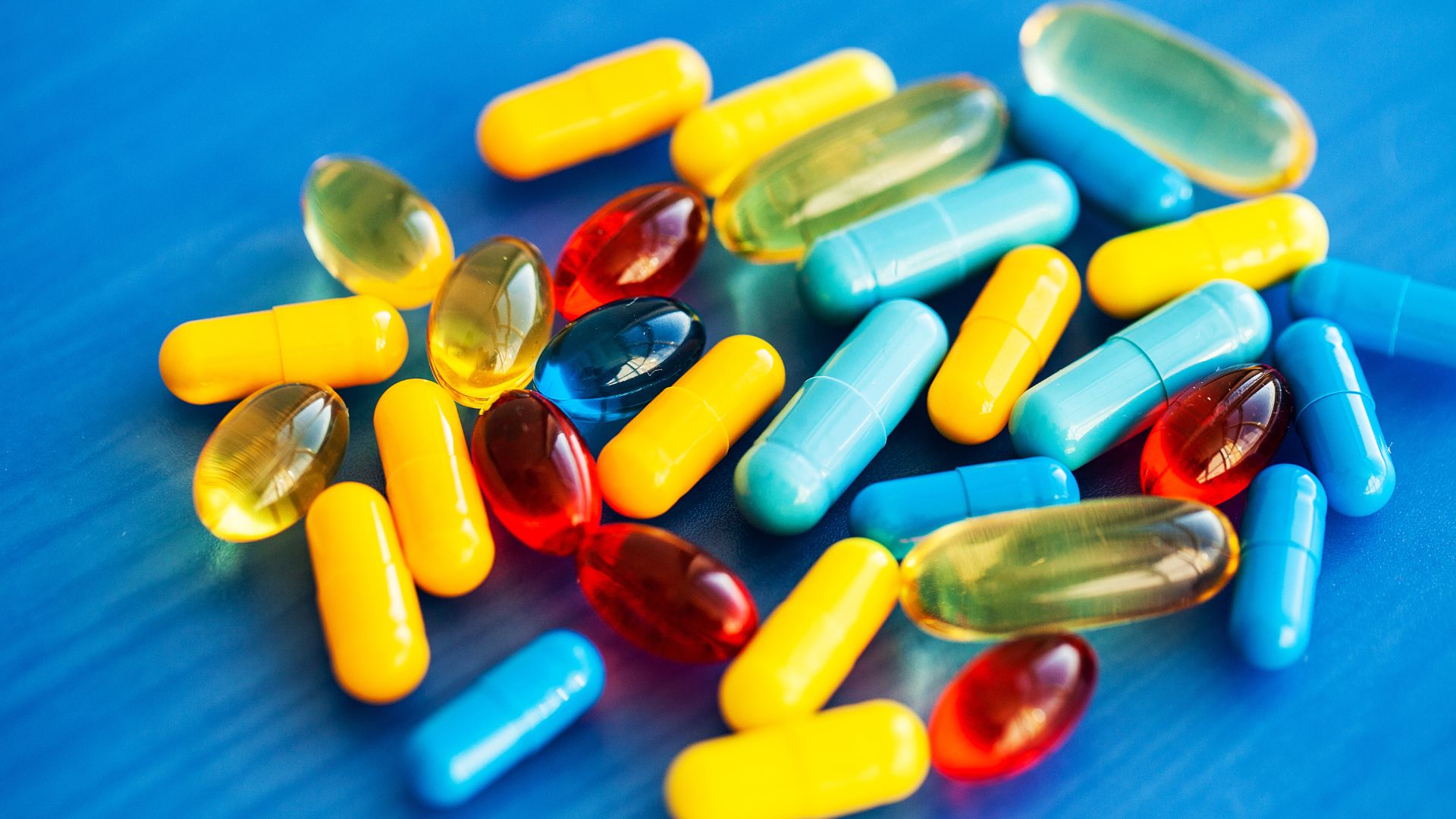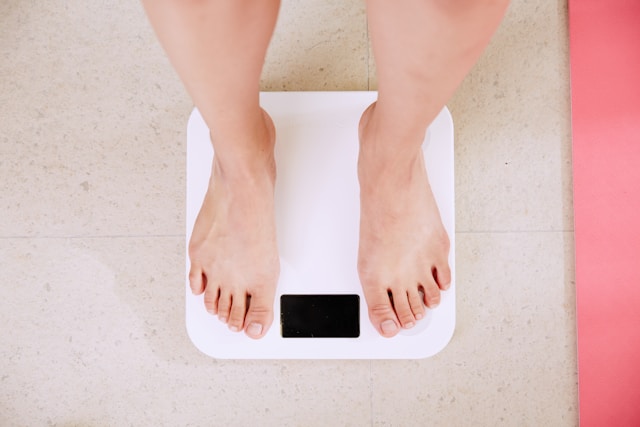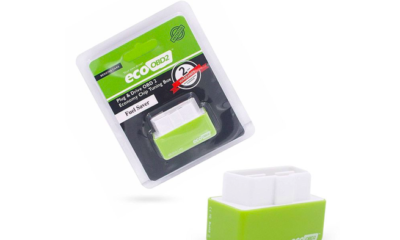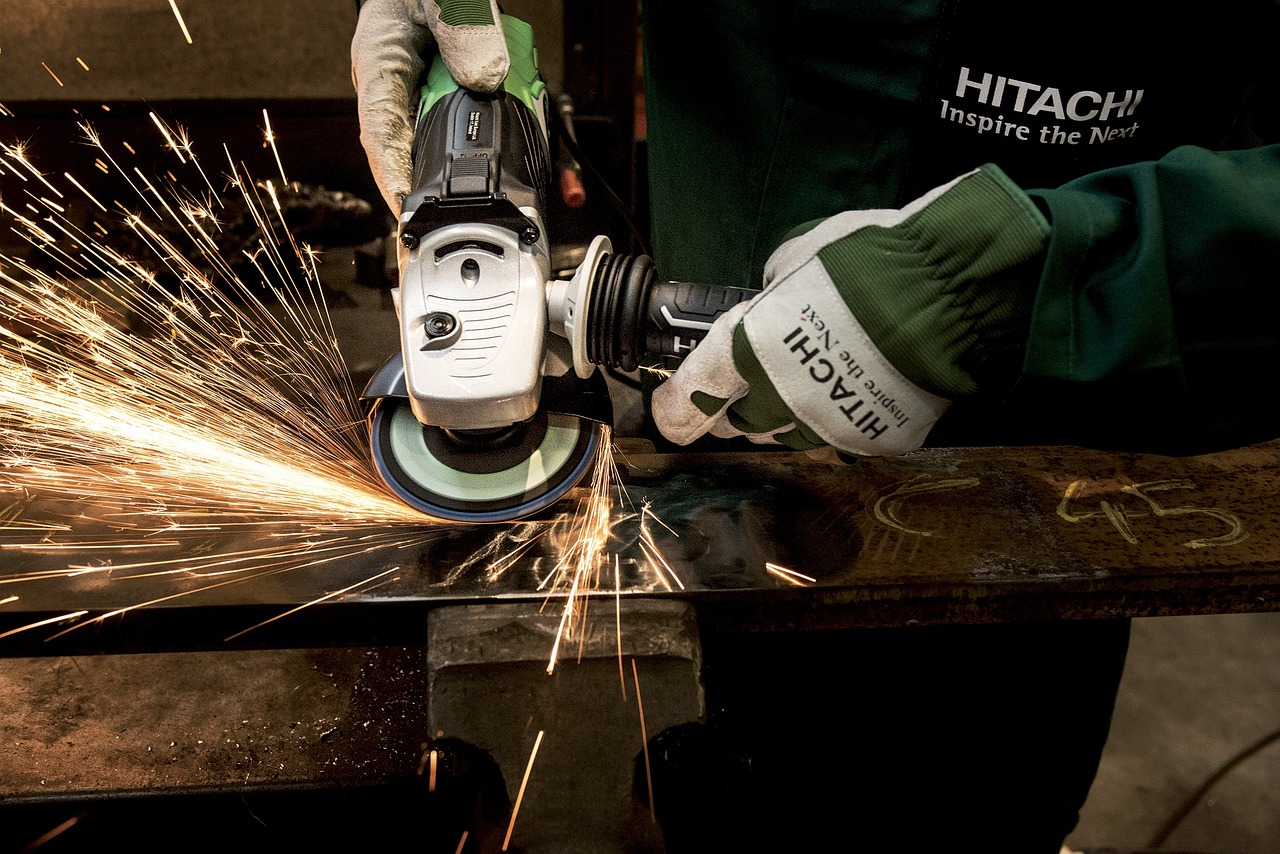Health
How to Increase Male Libido: Try These 7 Men’s Sexual Health Supplements

Gentlemen, listen up! If your sex life is feeling dull, your libido is low, or your performance is lacking, your sexual health might need a tune up. But don’t worry — there are a variety of common factors that may be responsible for low drive: stress, aging, alcohol use, sleep troubles, and low testosterone are all common causes.
Fortunately, there are plenty of natural libido boosters for men to get you back in the bedroom and performing better than ever! We’ll recommend the best supplements for men’s libido, and you can find even more at a local or online health supplement store!
Best Men’s Sexual Health Supplements
Maintaining a healthy lifestyle is the most important factor to increase libido and sexual desire. When healthy choices aren’t enough, adding natural supplements to the mix can be the perfect way to refine and renew your sexual health. Unfortunately, we might not know what is causing our low libido. If that’s the case for you, here are two of the best men’s sexual health supplements that are sure to enhance libido, desire, and satisfaction in a completely natural and powerful way!
Terry Naturally Red Ginseng Male Enhancement: This natural libido booster enlists the help of red ginseng for erectile dysfunction (ED), enhanced sex drive, and better performance.
Lively Vitamin Co. Rock and Roll: The name says it all! This is among the best supplements for men’s libido because it blends together herbs and nutrients that focus on boosting stamina, strengthening erections, and intensifying sensations.
Stress and Libido
It’s no secret that stress can be the root cause of health issues. And that definitely doesn’t exclude sex drive! From daily work troubles to looming worries, stress might be behind your bedroom woes. Let’s take a look at some FAQs regarding stress and libido:
How does stress affect a man sexually?
Stress levels are on the rise, leaving many of us feeling overwhelmed.[1] Unfortunately, this rise in stress can account for sexual health troubles. While short bouts of stress don’t typically leave a lasting impact on sexual function, prolonged periods of stress and anxiety can be to blame for low libido. In fact, chronic stress is the constant production of the stress hormone, which disrupts natural hormone levels that play an important role in reproductive health. Additionally, increased fatigue, distracted thoughts, and poor sleep often exacerbate stress’s destructive affect on sex drive.
Can stress cause erectile dysfunction?
Short answer, yes! Your mind can get in the way of arousal due to distracted thoughts, anxiety, and more. Additionally, stress increases blood pressure which can lead to narrowed blood vessels and poor blood flow throughout the body, making it difficult to obtain and maintain an erection.
How can I reduce my stress and increase my libido?
Thankfully, there are natural stress relief options that help bring your stress down so your sex drive can return to its normal level. In addition to leading a healthy lifestyle, there are supplements that can enhance your stress response and libido in a completely natural way. Let’s take a look!
Curcumin for Stress Relief
Curcumin works hard in the body! This bright orange flavonoid is the active ingredient in turmeric. It’s best known to reduce unhealthy inflammation levels, but this mighty nutrient does even more. In fact, you can add curcumin for stress relief to its long list of benefits! Curcumin has been shown to relieve anxiety and reduce the effects of chronic stress on the body.[2] Because stress often disrupts sex drive, curcumin can bring a calming sense of balance to restore a healthy libido!
We recommend Terry Naturally CuraMed® 750mg for extra strength protection against the damaging effects of stress and anxiety.
CBD for Libido and Stress
Make some room in the cabinet, CBD is an all-in-one powerhouse to renew sex drive, relieve stress, and enhance pleasure! CBD interacts with the body’s endocannabinoid system (ECS) which plays an important role in a variety of processes like sleep, immunity, digestion, reproductive health, and more! Because it impacts hormonal health, CBD provides double the support for a better sex drive and reduced stress. Plus, CBD oil for ED is an effective method to maintain healthy reproductive function.
Try Hemplucid CBD Oil 1000mg for a potent CBD oil that helps relieve stress, boost libido, and avoid ED.
Natural Libido Boosters for Men
Low libido and diminished reproductive function can be the results of various factors. In addition to stress, physiologic factors play a major role in everyday reproductive health. For men, the key players include testosterone production, cardiovascular and circulatory function, and prostate health. Here’s how we can enhance sexual health by supporting the general wellness of our bodies!
How to Boost Testosterone
Low T? We’re here to help. If you’re experiencing a slump in your sex drive, there’s a good chance that low testosterone is at the heart of it. Known as the male sex hormone, testosterone is vital to a healthy sex life. When we’re able to maintain healthy levels of testosterone, our bodies can see an increase in mood, arousal, and even sexual satisfaction.
Want to know how to increase libido with a natural testosterone booster? Look to zinc! Zinc benefits for men center around this important mineral’s impact on testosterone levels.[3] Supplementing with zinc can be exactly what you need to raise your testosterone and your sexual desire at the same time. We recommend Pure Encapsulations Zinc 30 mg for a powerful and simple way to increase libido.
How to Increase Blood Flow to Penis
Like testosterone, we need healthy circulation in order to have a healthy libido. Why? Without healthy blood flow, it’s more difficult to obtain and maintain an erection. A key reason behind erectile dysfunction is poor circulatory health. But here’s the good news — the little blue pill isn’t always the best answer for a stronger erection. In fact, there are plenty of natural methods to improve blood flow for better reproductive health and overall wellbeing.
Some of the best circulatory and libido vitamins are B vitamins! A study in 2014 discovered that a deficiency in folate (vitamin B9) was associated with erectile dysfunction. This B vitamin is important for forming new blood cells and even assists sperm production. Additionally, niacin (vitamin B3) has been found to support erectile function.[4] That’s why we recommend a B complex supplement to improve blood flow and act as a natural libido booster for men.
Men’s Prostate Health
Prostate health is another essential piece of men’s sexual function! The prostate is responsible for creating the fluid that transports sperm and makes up semen, then causes ejaculation. With age, prostate health problems are more likely to occur and play a role in low libido and erectile dysfunction. Among these problems includes an enlarged prostate which commonly impacts urinary health. Additionally, the unpleasant symptoms of an enlarged prostate can result in low libido, difficulty maintaining an erection, and reduced satisfaction.[5]
The most effective way to avoid these symptoms and enhance your sex life is by targeting your prostate with the best supplements for prostate health. Check out Pure Encapsulations Quercetin. This natural antioxidant powerfully targets the inflammation associated with an enlarged prostate.
Maintaining Men’s Sexual Health
Sexual health is key to a healthy and happy life. In addition to making healthy lifestyle choices, including a natural libido booster in your daily routine can bring the added support you’ve been missing for a better sex life. Be sure to browse your local good health store for even more natural libido boosters for men.
Health
Finding Your Best Fit: Are GLP-1 Medications Right for Your Weight Loss Journey?

Over the past few years, a class of drugs known as glucagon-like peptide-1 (GLP-1) receptor agonists has been gaining attention, not only for treating type 2 diabetes but also in the field of weight management.
With obesity affecting “at least one in five adults (20%) in each U.S. state,” according to the CDC, many individuals are seeking effective solutions that can complement diet and exercise. Two of the most discussed options are GLP-1 injections for weight loss and GLP-1/GIP for weight loss, both of which have shown promising results.
However, deciding if these medications are right for you isn’t a one-size-fits-all process; it’s essential to determine if GLP-1s are right for you to get you to be your best self in 2025. SimpleFixRx — a healthcare service dedicated to personalized options — can help you explore GLP-1s therapy as part of your 2025 broader health plan.
Understanding GLP-1 receptor agonists
GLP-1 receptor agonists were initially designed to help regulate blood sugar in individuals with type 2 diabetes by mimicking a hormone that controls insulin secretion, slows digestion, and reduces appetite. The recent spotlight on GLP-1 injectors for weight loss and GLP-1/ GIP for weight loss stems from studies showing that these medications can help many people achieve significant, sustained weight loss — often in the 10-15 percent range or more of their body weight — when paired with healthier eating habits and increased physical activity.
Key benefits:
- Enhanced blood sugar control: For individuals with type 2 diabetes, these medications can significantly lower hemoglobin A1C levels.
- Appetite regulation: By slowing gastric emptying and impacting appetite signals, GLP-1s can help reduce unhealthy food cravings.
- Possible cardiovascular benefits: Some research suggests that certain GLP-1s may offer heart-protective effects, reducing the risk of cardiac events.
Who can benefit from GLP-1?
GLP-1 receptor agonists have emerged as a promising option for individuals facing various metabolic and weight-related challenges. Whether you’re dealing with type 2 diabetes or seeking a meaningful way to jump-start weight loss, therapies like GLP-1/ GIP for weight loss and GLP-1 injections for weight loss could help bridge the gap where traditional diet and exercise might fall short.
Individuals with type 2 diabetes
GLP-1s remain a staple in controlling high blood sugar for patients who’ve struggled with traditional oral medications or lifestyle measures alone. If you have type 2 diabetes, speak with your healthcare provider to see if adding a GLP-1 might improve your overall management plan.
Those with obesity or weight-related health concerns
If your body mass index (BMI) is 30 or above — or you’re overweight (BMI 25–29.9) and have additional complications like prediabetes, hypertension, or high cholesterol — GLP-1s might be a strong consideration. The appetite-suppressing effects often help jump-start weight loss.
People seeking a catalyst for lifestyle changes
Even if you haven’t succeeded with traditional diets or exercise routines, medications such as GLP-1/ GIP for weight loss or GLP-1 injections for weight loss may help you regain momentum. Still, a commitment to long-term lifestyle improvements — such as more balanced eating and regular physical activity — is vital to achieving the best results.
Patients with hard-to-control metabolic factors
Some people face genetic or metabolic hurdles that make weight management exceptionally challenging. GLP-1s can help bridge that gap, providing extra support where willpower and standard lifestyle interventions might not suffice on their own.
By combining medical guidance, like that from the experts of SimpleFixRx, with regular follow-ups and a commitment to healthier habits, eligible patients may find these therapies to be a game-changer in achieving sustainable weight management and better overall health.
GLP Squared
Some compound pharmacies are now combining options for GLP medications, allowing for the microdosing of a combination of GLP and GLP1/GIP. Microdosing has numerous benefits for patients, including reduced nausea, a more steady release of medication, and decreased inflammation, among others. SimpleFix does offer GLP squared, and it is less expensive than GLP1/ GIP alone.
The SimpleFixRx approach
SimpleFixRx specializes in providing personalized healthcare solutions, including access to GLP-1 therapies, through a convenient, patient-centered platform. Their team of licensed healthcare providers works closely with patients to:
- Assess eligibility: SimpleFixRx professionals review each patient’s medical history, lifestyle habits, and specific health goals to determine if GLP-1 therapy is appropriate.
- Offer comprehensive care plans: Beyond prescribing medications, SimpleFixRx aims to create a holistic approach that includes nutritional guidance and exercise plans, ensuring GLP-1 therapy is supported by healthier daily habits.
- Monitor progress: Through regular follow-up appointments, patients can collaborate with the SimpleFixRx team to fine-tune their regimen and address any side effects or emerging concerns.
Potential side effects and considerations
While GLP-1s offer noteworthy benefits, they aren’t free of potential drawbacks. The most frequently reported side effects include nausea, diarrhea, and, in some cases, vomiting — especially when first beginning treatment — but these often ease as your body adjusts. Other, more serious risks include pancreatitis or gallbladder issues, though these are generally less common.
Your medical history and personal goals should guide any decision to start GLP-1 therapy. Certain gastrointestinal or thyroid conditions, for instance, could make these medications less suitable. Women who are or might become pregnant also need specialized guidance, as safety data for pregnancy remains limited.
Making the decision with SimpleFixRx
Dr. Garrett H. Garner, M.D., F.A.C.O.G., a board-certified OB/GYN with over two decades of experience in North Texas, highlights the importance of individualized care. “We take the time to review each patient’s medical history, dietary habits, and long-term health objectives. Medications like GLP-1/ GIP or GLP-1 can be game-changers — but they work best within a broader strategy that includes nutrition, exercise, and regular follow-up.”
Before you opt for any GLP-1 medication, consider asking your healthcare provider or a service like SimpleFixRx these five questions:
- “Am I a good candidate for GLP-1s based on my health profile?”
- “How will this therapy interact with other treatments or conditions I have?”
- “What lifestyle changes, if any, should I implement to maximize the benefits?”
- “Which medication — GLP-1/ GIP vs. GLP-1 — would best suit my needs?”
- “How often should I schedule follow-up appointments to assess progress and adjust my treatment plan?”
By partnering with a dedicated healthcare service like SimpleFixRx, you can gain access to expert guidance, personalized care plans, and ongoing support — all crucial components to long-term success.
These therapies are tools, not magic solutions, as sustainable progress often hinges on a combination of effective medication, mindful eating, regular physical activity, and consistent medical oversight. However, with the proper support structure and commitment, GLP-1 medications can be a transformative part of your journey toward better health.
-

 Tech4 years ago
Tech4 years agoEffuel Reviews (2021) – Effuel ECO OBD2 Saves Fuel, and Reduce Gas Cost? Effuel Customer Reviews
-

 Tech6 years ago
Tech6 years agoBosch Power Tools India Launches ‘Cordless Matlab Bosch’ Campaign to Demonstrate the Power of Cordless
-

 Lifestyle6 years ago
Lifestyle6 years agoCatholic Cases App brings Church’s Moral Teachings to Androids and iPhones
-

 Lifestyle4 years ago
Lifestyle4 years agoEast Side Hype x Billionaire Boys Club. Hottest New Streetwear Releases in Utah.
-

 Tech7 years ago
Tech7 years agoCloud Buyers & Investors to Profit in the Future
-

 Lifestyle5 years ago
Lifestyle5 years agoThe Midas of Cosmetic Dermatology: Dr. Simon Ourian
-

 Health6 years ago
Health6 years agoCBDistillery Review: Is it a scam?
-

 Entertainment6 years ago
Entertainment6 years agoAvengers Endgame now Available on 123Movies for Download & Streaming for Free
